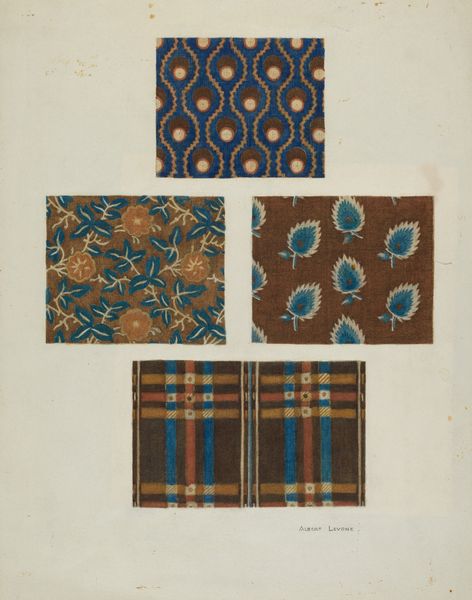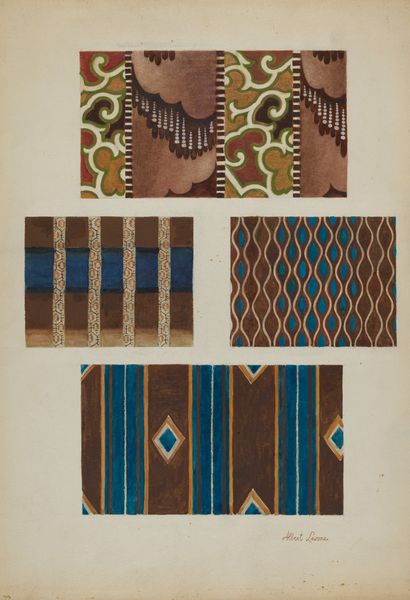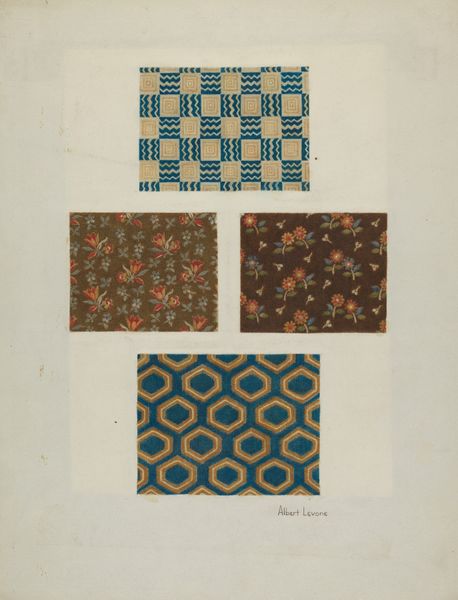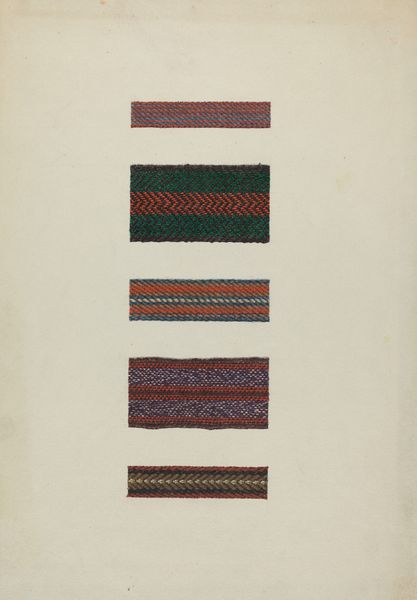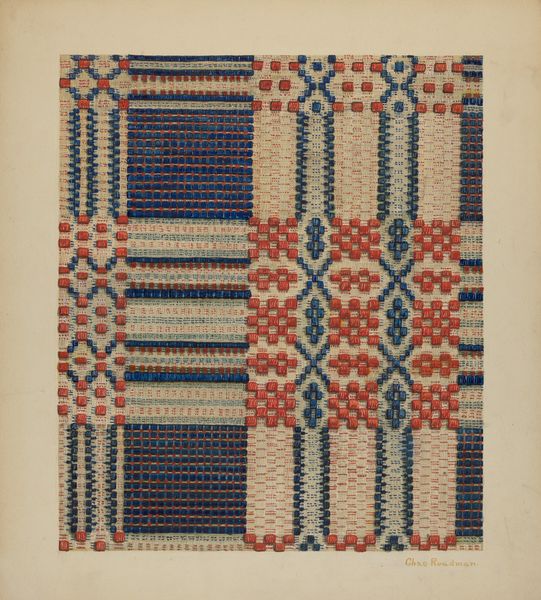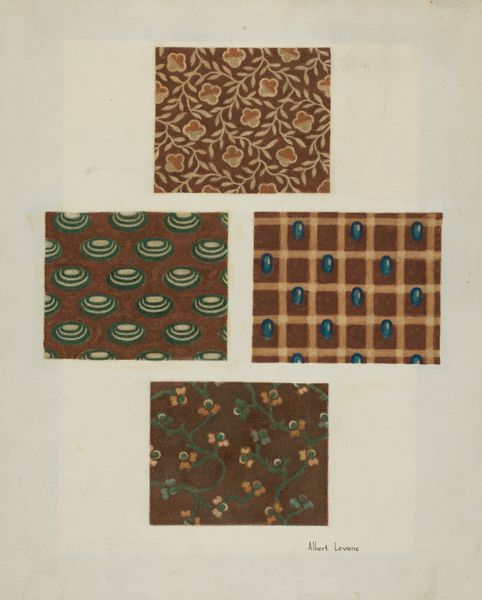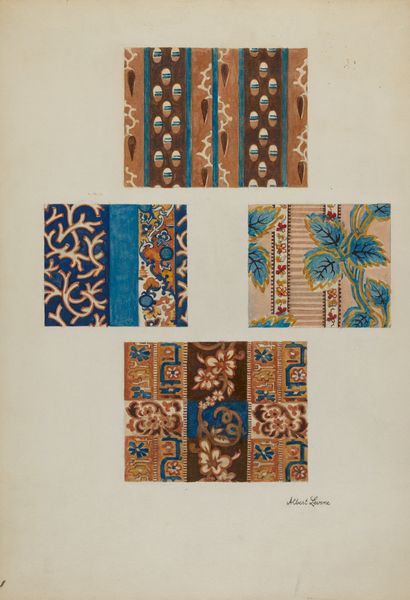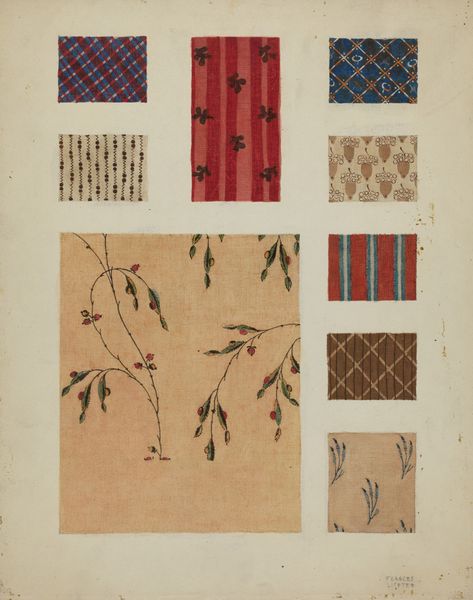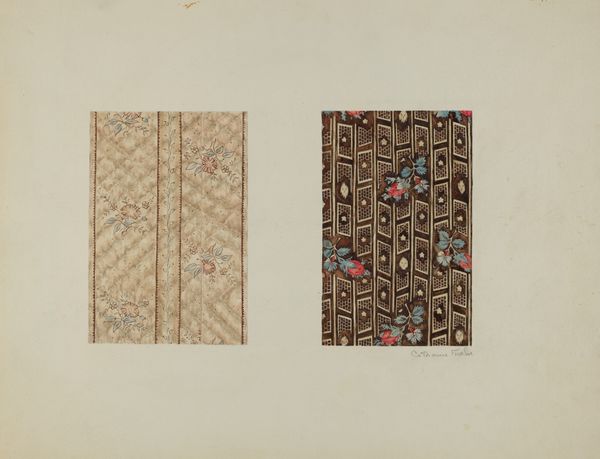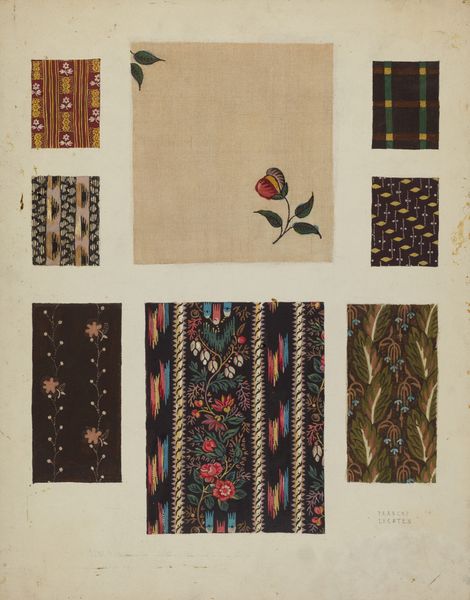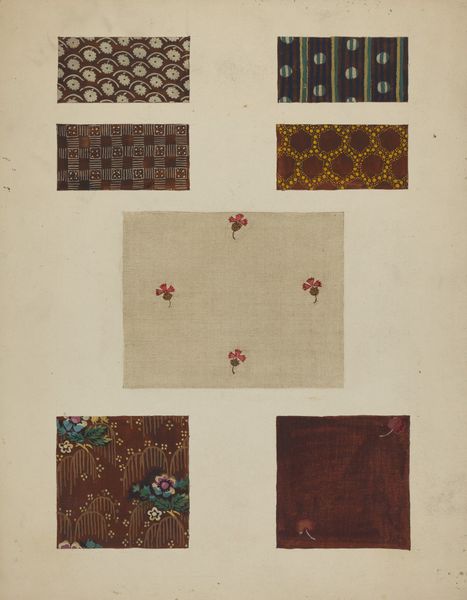
drawing, mixed-media, print, textile
#
art-deco
#
drawing
#
mixed-media
# print
#
pattern
#
textile
#
fashion and textile design
#
abstract
#
geometric
#
pattern repetition
#
textile design
#
decorative-art
#
modernism
Dimensions: overall: 35.6 x 26.4 cm (14 x 10 3/8 in.)
Copyright: National Gallery of Art: CC0 1.0
Editor: So, this mixed-media work is called "Cotton Prints," and it's attributed to Albert Levone from around 1937. The drawing shows four different textile patterns in blues, greens, and browns. I find it really appealing, like something that could be on a dress or furnishing from that era, even a contemporary runway look, it evokes luxury and class. How do you interpret this work, given its medium and style? Curator: Well, considering Levone's "Cotton Prints," dating back to the late 1930s, it’s essential to understand its place within the broader socio-economic context. Think about the cultural landscape during the Depression Era, where textiles held significant meaning beyond mere decoration. The designs, with their geometric and abstract forms characteristic of Art Deco and Modernism, become almost subversive acts. Editor: Subversive, how so? Curator: Well, the patterns themselves suggest a desire for progress and modernity at a time when many were struggling with economic hardship. The textile designs become a form of resistance, almost projecting a vision of a brighter future through aesthetics. These designs likely targeted a growing market of working women entering professional spaces. How can fashion and textile design contribute to conversations around labour and access? Editor: I never really considered how social context would have impacted textile designs; it’s fascinating to view fashion as a subtle rebellion or advocacy for social progress. I hadn't looked at it beyond face value and assumed decorative art's function as mostly for beauty. Curator: Precisely! That's why exploring art and its origins in conversation, looking through a lens of historical understanding is critical, isn't it?
Comments
No comments
Be the first to comment and join the conversation on the ultimate creative platform.

